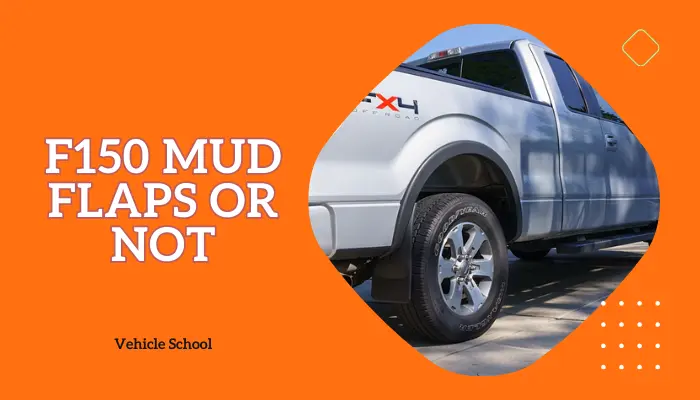The F150 has different drive modes to handle various conditions: “Normal” for everyday driving, “Eco” for fuel savings, “Sport” for a more exciting ride, and specialized modes like “Slippery,” “Deep Snow/Sand,” and “Mud Ruts” for specific situations. It also offers “Tow/Haul” for towing and “Rock Crawl” for rocky terrain.
Curious about how they work? That’s what I’m here to explain. Keep reading to find out what each drive mode does and its pros and cons.
F150 Drive Modes Explained
Here’s a list of all the drive modes available in the Ford F150 and their uses.
1. Normal
The Normal Mode in the Ford F-150 offers a straightforward driving experience for regular use. By default, the vehicle operates in two-wheel drive high, optimizing fuel efficiency. The system monitors factors like wheel slip and throttle input to determine power distribution. When in Normal Mode, all four-wheel drive modes become available, allowing adaptability to various driving conditions.
Normal mode is ideal for everyday driving such as commuting, urban exploration and highway travel, particularly on smooth surfaces.
Pros of Normal Mode
- Balances performance, comfort, and convenience for diverse driving scenarios.
- The two-wheel drive high setting enhances fuel efficiency during regular driving.
- Provides added traction in challenging road conditions.
Cons of Normal Mode
- Not optimized for extreme off-road conditions despite selectable four-wheel drive.
- Feels very conservative and sluggish for those who usually drive faster.
2. Slippery
Slippery Mode in the Ford F-150 adjusts throttle response and shifting for better performance on slippery surfaces.
It’s available in different configurations, depending on the four-wheel drive system.
Variations of Slippery Mode
- 4×2 (Two-Wheel Drive): Lowers throttle response for improved traction on slippery terrain. Avoid using it on dry pavement to prevent potential damage.
- 4×4 with 2-Speed Torque On Demand: Similar to 4×2, but with the default four-wheel drive auto mode, excluding two-wheel drive high for better traction on slippery surfaces.
- 4×4 with Electronic Shift-On-The-Fly: Maintains default four-wheel drive high, with the flexibility to select any four-wheel drive mode.
When to Use Slippery Mode
Slippery mode is ideal for driving on snow, ice, or slippery roads, especially on surfaces covered with loose or wet materials.
Pros of Slippery Mode
- Optimizes vehicle performance for improved traction on slippery surfaces.
- Adjusts shifting patterns for enhanced control in slippery conditions.
- Offers a range of four-wheel drive options based on the specific system.
Cons of Slippery Mode
- Using Slippery Mode on dry roads may lead to potential damage.
- While effective on slippery surfaces, not optimized for more challenging off-road terrains.
3. Deep Snow/Sand
The Deep Snow/Sand Mode adjusts accelerator response, traction, and stability controls on soft, dry sand, or deep snow.
It defaults to four-wheel drive high, with the option to select four-wheel drive low for added torque.
The electronic locking differential engages at any speed and can be disengaged using the button.
When to Use Deep Snow/Sand Mode
Deep snow/sand mode is best suited for off-road driving on soft, dry sand or in deep snow conditions. It is useful for maintaining momentum and getting unstuck in challenging terrain.
Pros of Deep Snow/Sand Mode
- Improves traction for navigating soft, sandy, or deep snow-covered terrain.
- Engages at any speed for enhanced traction and can be disengaged as needed.
Cons of Deep Snow/Sand Mode
- Not ideal for pavement or packed snow, it poses driveline issues and needs frequent toggling.
- Good in sand and deep snow, but not great everywhere off-road.
4. Mud/Ruts
Mud/Rut Mode boosts off-road performance in tricky conditions.
This mode defaults to four-wheel drive high but gives you the option for extra torque in four-wheel drive low.
The electronic locking differential kicks in at any speed and can be turned off with a simple button press.
When To Use Mud/Ruts Mode
Mud/Ruts mode is good for tackling off-road conditions such as mud and ruts, where improved traction and torque are needed.
Pros of Mud/Ruts Mode
- Enhances the vehicle’s grip on challenging terrain.
- Four-wheel drive offers increased torque for overcoming obstacles.
Cons of Mud/Ruts Mode
- Not suitable for pavement or packed snow, risking potential damage.
- Effective for some off-road challenges but may not be optimal for all terrains.
5. Rock Crawl
Rock Crawl Mode in the Ford F-150 is all about off-road and rock climbing.
It tightens things up for better control, locks the differential, and sticks to four-wheel drive low for maximum power.
| Note: In the F150 Raptor, Rock Crawl Mode also defaults to Comfort Steering and Off-road suspension. You can still play around with other modes for a customized off-road experience. |
When To Use Rock Crawl Mode
Rock Crawl Mode is good during tricky off-road moments, especially when you’re tackling rocks and need to be precise while having a good amount of control.
Pros of Rock Crawl Mode
- Everything gets tuned for smoother handling during rock crawling.
- Grabs better traction and you can let go when you need to.
Cons of Rock Crawl Mode
- Prioritizes precision over speed in certain off-road situations.
- Specifically for rock climbing, but may not be optimal for other off-road scenarios.
6. Tow Haul
Ford F150 tow haul mode tweaks how the transmission shifts, making it smoother, and adds engine braking for downhill control. You choose any four-wheel drive mode, and it remembers your last pick.
It also adjusts the steering and suspension for a comfortable ride when you’re towing something big. Plus, below 25 mph, the electronic locking differential kicks in for extra control. Use it when towing or hauling, especially on downhill stretches.
7. Eco Mode
Ford F150 eco mode offers fuel efficiency for everyday driving. It defaults to Two-wheel drive, which helps save gas. There’s no four-wheel drive in Eco Mode, though, but that keeps things simple.
The electronic locking differential gives you a bit more control at slower speeds, kicking in below 25 mph (40 km/h). It works for both 4×4 and 4×2 setups.
Use it for your regular drives when you want to be kind to your gas tank. Stick to the smooth roads for the best results.
8. Sport Mode
F150 Sport Mode is all about adding a bit of pep to your drive. It amps up how fast you accelerate, gives the steering a sportier feel, and hangs onto lower gears longer for quicker takeoffs.
It’s great when you want a lively drive, be it on the streets or open roads.
9. Trail Mode
Trail Mode is a special mode for some 2021 F-150 models, meant for muddy, rutted, soft, or bumpy terrain. It adjusts the gas pedal to boost the wheel spin, preventing you from getting stuck.
Similar to Mud/Rut Mode, it brings in the electronic locking differential, engaging at speeds below 25 mph (40 km/h) for added grip at slower speeds.
When To Use Trail Mode
For tough off-road situations like mud, ruts, or uneven ground, keeping momentum matters. Opt for Trail Mode for the Mud/Rut move when you need extra wheel spin control.
Pros of Trail Mode
- Reduces the possibility of getting stuck in rough terrain.
- Provides solid grip and control at slower off-road speeds.
Cons of Trail Mode
- Not effective for faster drives.
- Meant for very specific situations.
How To Switch Drive Modes In F150?
Switching drive modes in the F150 is incredibly easy; just follow these steps:
- Find the drive mode selector on your dash.
- Start your truck.
- Twist the drive mode knob to pick your mode.
- Choose what fits your driving style.
- Check your choice on the display.
FAQs
In which F-150 model years is it possible to select different drive modes?
Drive modes are standard across all F150s past 2020.
Can you change drive modes while driving the F150?
Yes, you can switch drive modes modes on the fly. Just watch out because it might kick into 4×4 on regular roads, which isn’t great, especially with the regular transfer case. If you’ve got 4A, it’s not a big deal. If you can’t switch or see the “F150 drive mode not available” message, something might be up, or you’re in a situation where certain modes won’t work.
Is it ok to drive the F150 in sport mode all the time?
Yeah, go for Sport Mode if you dig the sportier feel, but it’ll use more gas. Normal Mode is a solid everyday choice. And, remember, Sport Mode isn’t great off-road. Just roll with what suits your drive and the road. Also, keep in mind that it can amp up component wear with the extra power.
Ending Remarks
So, which drive mode caught your eye?
The F150 is all about making things easy for you, whether you’re tackling city streets or going off-road in the snow.
Pick the mode you like, give it a spin, enjoy the drive, and remember to be careful.






